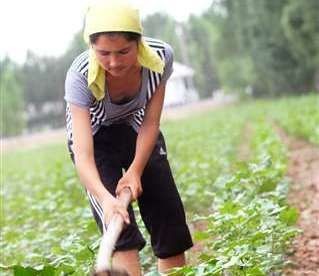KABUL (TCA) — A joint report by the Government of Afghanistan and the World Bank Group, Jobs from Agriculture in Afghanistan, explores the agriculture sector’s role in explaining the dynamics of rural employment.
The report analyzes three dimensions: the current jobs structure in rural areas; the inclusive nature of agricultural jobs for vulnerable groups, such as women, youth, and the landless; and the role of public-private sector interventions in supporting job creation in agriculture.
According to the report, Afghanistan’s rural economy is experiencing an influx of youth workers into the labor force, increasing the competition for every new job. The rural economy, however, is not yet equipped to absorb all workers into the labor market. As a result, more than 50 percent of rural youth workers are involved in agriculture and livestock, mostly as unpaid family workers.
The female labor force participation rate (women that work for paid income) in rural areas continues to be low at 29 percent, with 60 percent of employed women working in the livestock sector. Four out of five female rural workers are unpaid family workers, compared with only one out of five male workers.
The low share of agricultural income, despite high employment share, is mainly due to limited market participation and the high number of unpaid family workers. Few rural households that own garden plots or raise livestock sell at the market and to earn income. Youth and women constitute a large portion of this unpaid workforce.
The crop agriculture subsector is not diversified and overly concentrated on wheat. The lack of crop variety has made farm households vulnerable to stagnant or declining wheat prices in local markets. While farmers continue to produce wheat and other food crops for subsistence to ensure food security, the lack of profitability in wheat production may prompt them to cultivate poppy on irrigated land.
The production of fruits, vegetables, flowers, and livestock have great potential to create more, sustainable, and inclusive jobs if farmers are provided with technical knowledge, financial support, and greater access to market facilities. Commercial production of fruits and nuts, as well as livestock products would increase income and employment, including helping to create new jobs for young workers in related areas. By improving the horticulture and livestock economy, the government could also increase the employment share in food processing.
The report recommends the country to diversify toward high-value agriculture and livestock. While policies to improve crop productivity, such as rice, should be in place, policies to diversify agriculture toward high-value agriculture including fruits, vegetables and livestock should be prioritized. Expansion of irrigation facilities and improved seeds availability can support productivity growth.
Another recommendation is to link farmers to markets through continued investment in connectivity and infrastructure – the development of agricultural value chains is key to raising productivity and supporting job creation. Continued investments in rural roads and local infrastructure, information and communication technology, and reliable and affordable access to energy are key to enable local producers to access markets and increase agricultural productivity. It is also important to improve women’s access to markets to catalyze the livestock and horticulture subsectors, and manufacturing and processing sectors, where female workers are predominantly employed.
The report says that increased agricultural productivity can boost demand for nonfarm services and products, and a vibrant nonfarm sector can increase demand for high-value agricultural products.
While the report shows that literacy supports women to join the workforce, evidence from agricultural/rural development interventions shows that women who have access to finance and linkages to markets are successfully engaging in nonfarm activities. Policies and interventions that ease financial constraints and improve the skills of the rural workforce, mainly for the most vulnerable groups, should be promoted.
The report says that private sector efforts in the sector should be underpinned by a conducive institutional, regulatory and business environment to realize the potential of agriculture. The report shows that two policy levers can enhance the growth potential of jobs in the agro-processing sector: (i) enhanced investments and advisory services to promising agro-processing firms to stimulate rapid job creation in local and regional economies; and, (ii) government policy must support the increased use of vertical integration (or at least coordinated linkages) to mitigate risks in the supply chain.









